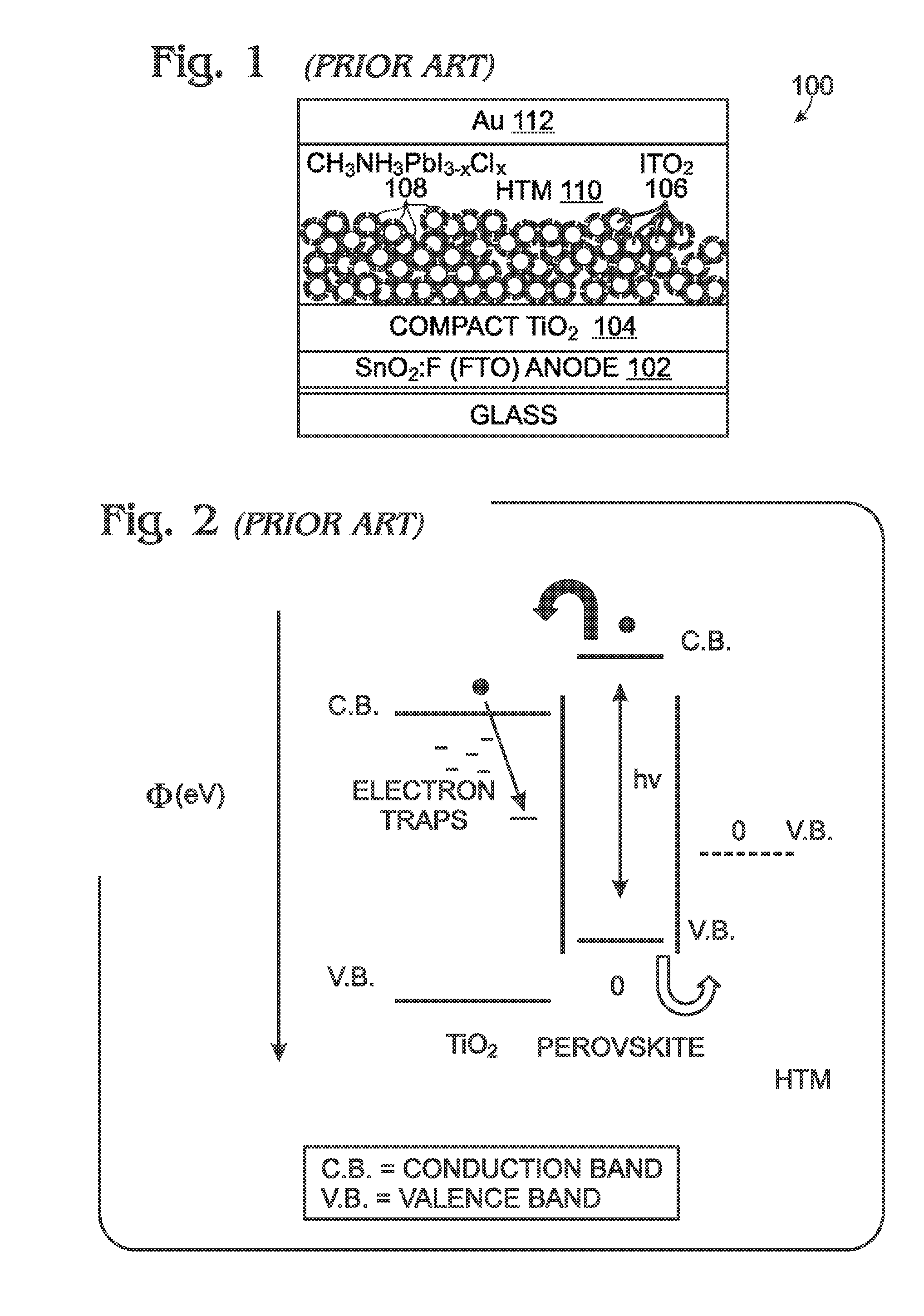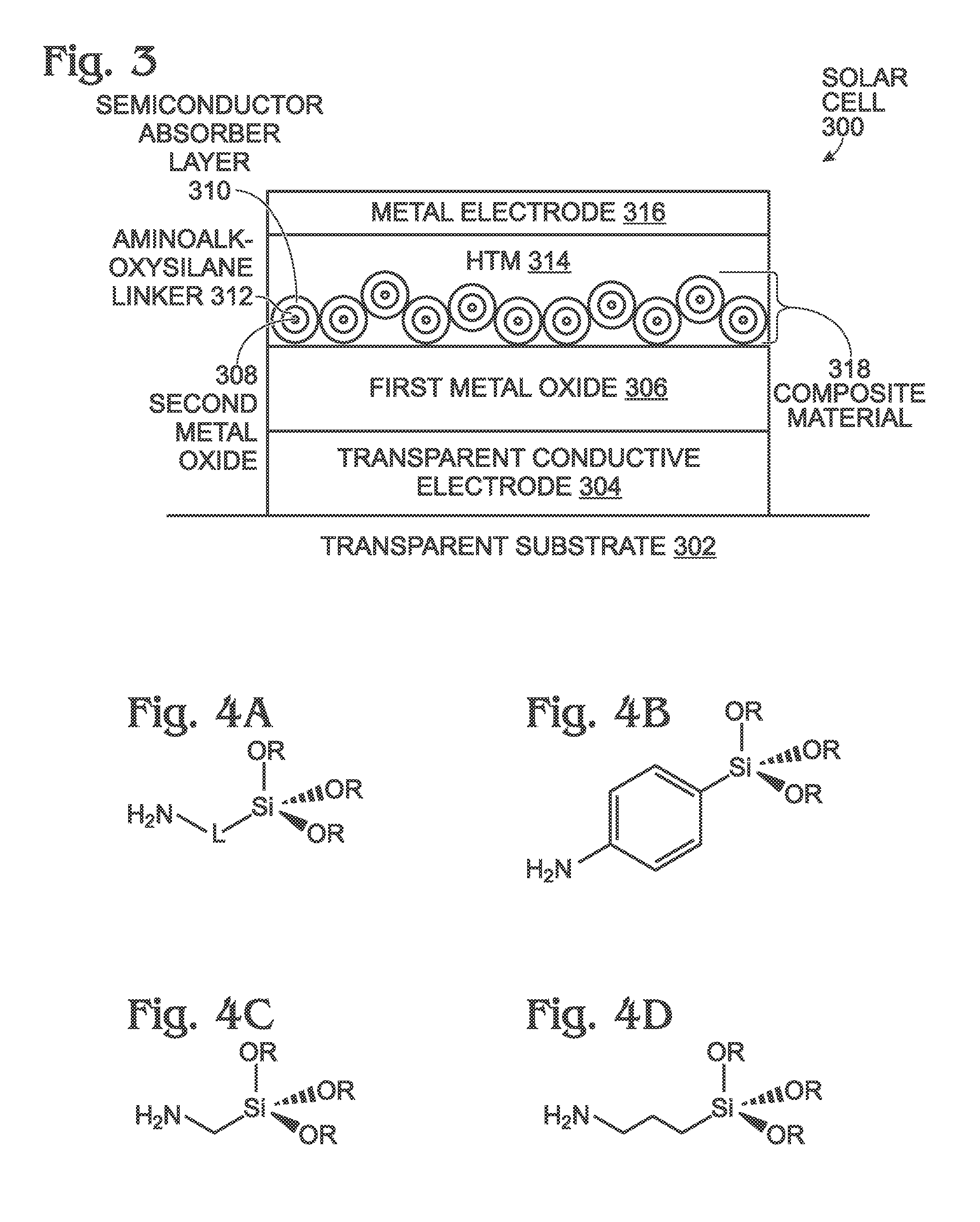Mesoporous Structure Solar Cell with Siloxane Barrier
a solar cell and membrane technology, applied in the field of solar cells, can solve the problems of remaining perovskite decomposition at the tiosub>2/sub>/perovskite interface, polycrystallinity and potential problems with grain boundaries, etc., and achieve the effect of effective passivation, good passivation, and facilitate the proper formation of the perovskite layer
- Summary
- Abstract
- Description
- Claims
- Application Information
AI Technical Summary
Benefits of technology
Problems solved by technology
Method used
Image
Examples
Embodiment Construction
[0031]FIG. 3 is a partial cross-sectional view depicting a mesoporous-structured solar cell with a silane or siloxane barrier. The solar cell 300 comprises a transparent substrate 302. Silica (glass), quartz, or a plastic may be used as the transparent substrate 302. A transparent conductive electrode 304 overlies the transparent substrate 302. Fluorine-doped tin oxide (SnO2:F) can be used as the transparent conductive electrode 304. Forms of graphene, indium tin oxide (ITO), indium gallium zinc oxide (IGZO), other conductive metal oxides, and single-walled carbon nanotubes may also possibly be used as a transparent conductive electrode material. A non-mesoporous layer of a first metal oxide 306 overlies the transparent conductive electrode 304. A mesoporous layer of a second metal oxide 308 overlies the non-mesoporous layer of first metal oxide 306. A mesoporous material is a material containing pores with diameters between 2 and 100 nanometers (nm).
[0032]Generally, the first metal...
PUM
| Property | Measurement | Unit |
|---|---|---|
| diameters | aaaaa | aaaaa |
| diameters | aaaaa | aaaaa |
| transparent | aaaaa | aaaaa |
Abstract
Description
Claims
Application Information
 Login to View More
Login to View More - R&D
- Intellectual Property
- Life Sciences
- Materials
- Tech Scout
- Unparalleled Data Quality
- Higher Quality Content
- 60% Fewer Hallucinations
Browse by: Latest US Patents, China's latest patents, Technical Efficacy Thesaurus, Application Domain, Technology Topic, Popular Technical Reports.
© 2025 PatSnap. All rights reserved.Legal|Privacy policy|Modern Slavery Act Transparency Statement|Sitemap|About US| Contact US: help@patsnap.com



